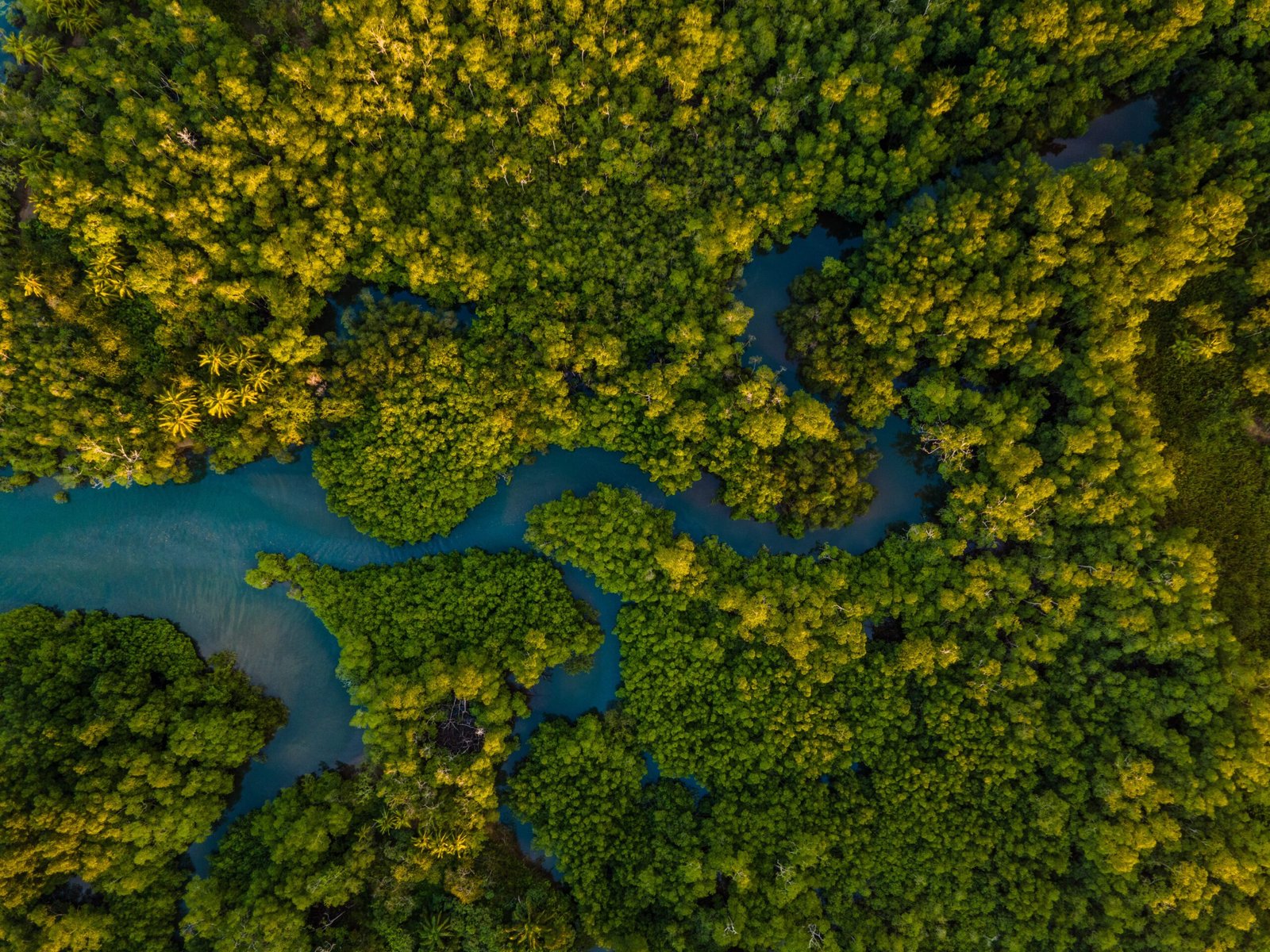Feathers of the Osa: A Glimpse into the Avian Wonders of the Osa Peninsula
November 14, 2023Dolphins of Golfo Dulce: A Marine Symphony in Costa Rica’s Hidden Paradise
November 14, 2023
Mangroves: Contributors to Golfo Dulce’s Ecological Health

Aerial View of the Esquinas River Mangrove Forest
Let us talk about one of the most unusual coastal ecosystems on the planet: mangroves. Mangroves are coastal ecosystems consisting of salt-tolerant trees, shrubs, and other vegetation that grow in intertidal zones—areas between the land and sea regularly submerged and exposed by tides. These unique ecosystems are found in tropical and subtropical regions, particularly along sheltered coastlines, estuaries, and river mouths; all are elements found in Costa Rica’s Golfo Dulce.
Mangroves are periodically by the sea’s waters or when the rivers rise or overflow. Its base is an interminable interlacing of adventitious aerial roots, sometimes having fantastic or haunting forms but consistently and continually emerging from and sinking into the mud rhythmically flooded or exposed by the tides.
Mangroves prosper under particular conditions. Waters that are more or less brackish, highly saline muddy soil, and the frequent presence of anaerobic sediments represent the inevitable components of the mangrove forest. The local salinity concentration depends upon the distance from the sea and the balance between the salt and fresh waters.
The Golfo Dulce is home to several species of mangroves; each adapted to the unique conditions of the coastal environment. Common mangrove species in the region include red mangrove (Rhizophora mangle), black mangrove (Avicennia germinans), and white mangrove (Laguncularia racemosa).
Mangroves in the Golfo Dulce are critical habitats for numerous fish species, crustaceans, and birds. The complex root systems of mangroves provide shelter for juvenile fish and act as a nursery for various marine organisms. This ecological function contributes to the overall biodiversity of the gulf.
The dense root systems of mangroves help stabilize coastlines and protect against erosion. This is particularly important in a dynamic coastal environment like the Golfo Dulce, where river volume fluctuations can impact the shoreline.
Mangroves contribute to water quality in the Golfo Dulce by trapping sediments and filtering pollutants from the water. This natural filtration process helps maintain the health of the gulf’s marine ecosystem.
The mangroves of the Golfo Dulce attract a variety of bird species. Birdwatchers can observe coastal and mangrove-associated birds, such as herons, egrets, kingfishers, and various waterfowl, making it a prime destination for bird enthusiasts.
The unique beauty and ecological importance of the mangroves in the Golfo Dulce has led to the development of eco-tourism activities. Guided tours and boat excursions allow visitors to explore these ecosystems while raising awareness about the importance of mangrove conservation.
Mangroves worldwide face threats from habitat destruction, pollution, and climate change. In the Golfo Dulce, conservation efforts focus on protecting these valuable ecosystems. Initiatives include community-based conservation projects, educational programs, and sustainable tourism practices to ensure the long-term health of the mangroves and the surrounding environment.
The mangroves of the Golfo Dulce contribute significantly to the region’s ecological health, supporting biodiversity, providing essential services, and offering a unique and captivating natural environment for both locals and visitors. Conservation efforts are crucial to safeguarding these ecosystems for future generations.






